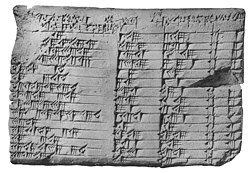Applied mathematics

- Benford's law. This was first stated in 1881 by Simon Newcomb, [1] and rediscovered in 1938 by Frank Benford. [2] The first rigorous formulation and proof seems to be due to Ted Hill in 1988.; [3] see also the contribution by Persi Diaconis. [4]
- Bertrand's ballot theorem. This result concerning the probability that the winner of an election was ahead at each step of ballot counting was first published by W. A. Whitworth in 1878, but named after Joseph Louis François Bertrand who rediscovered it in 1887. [5] A common proof uses André's reflection method, though the proof by Désiré André did not use any reflections.
